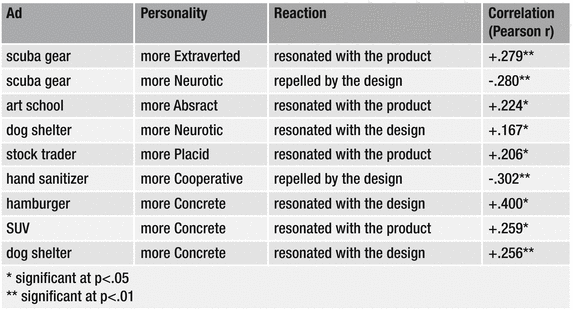If your digital creation has made it this far, it has already survived more psychological bottlenecks than many of its competitors. As your users and your audience, we have now seen and interpreted your meme and stored it permanently in memory with sufficient retrieval elements to be able to pull it up at will.
But what about the “at will” part? What makes us want to engage with some of your memes and for others be completely unmotivated? Content is king (and user experience is queen), but what kind of content appeals to people? Any of you who work for big publishers like the Huffington Post, Fox, Patch, Netflix or MSN, or for that matter advertise there, know that answering this question is key to your career.
That said, you might be making this question harder than it has to be by phrasing it the wrong way. Malcolm Gladwell learned this when he set out to define what is cool but ultimately concluded that it is what cool people like. i Learning from that, perhaps you should redirect some of the time and effort you have been putting toward determining what is rewarding, and instead focus it on who finds it rewarding. Put another way, concentrate on matching your memetic offering to our dispositions(Figure 11-1).

Figure 11-1. Individual differences in disposition influence whether we resonate or are repelled by the same digital meme. ii
We already introduced the idea of disposition matchingin Chapter 2 when we advised you how to adapt your meme to our task orientation. We recommended that if you give those of us who have a goal a search field and give those of us who have no goal links and thumbnails, then you’ll succeed. Simple as that.
In the next three chapters, we extend the basic idea to three kinds of dispositions, from the most global and stable to the most specific and momentary (Figure 11-2). Analogous to zooming in from the universe to the planet to the person, if you start by identifying our personality domains, then our developmental stages, then our current needs, you’ll have a pretty good idea of who we are and what content we find rewarding—at least enough for your writers to take it and run with it.

Figure 11-2. Types of dispositions. iii
Let’s start with personality matching. Some of us have the profile of preferences and behaviors across time and situations that will resonate with your article, mobile app, music genre, or advertisement. Others among us will be repelled by your work because it conflicts with our personality tendencies.
Key Point
There exists no ad, no feature, and no game that will uniformly appeal to us all. Our personalities influence whether we resonate or are repelled by your meme.
The prevailing taxonomy of personality traits among psychologists who actively study personality is the Big Five model. (Out in the business world, you’ll more often hear of the Myers-Briggs Type Indicator, which overlaps somewhat with the Big Five, but far fewer psychologists still focus on it.) Theorists going back to Freud and Jung have long speculated about the basic categories of personality traits , but they disagreed on how many there should be, ranging from 3 up to 16 or more. iv Starting in the 1960s with the work of Tupes & Christal v and coming together in the 1990s with the team of McCrae & Costa, vi psychologists compiled the nearly 20,000 English words used to describe individual differences, and they asked huge samples of military service men and women to rate whether or not each word described them. This was the first time psychologists used data to determine the basic variables that comprise personality, rather than theoretical speculation. And again and again they found that there are five.
And their names are….um, hang on a sec. This approach to personality was so different than the previous ones that psychologists are still having trouble naming those five factors. vii It seems no two studies label them the same way. The first reason is that the Big Five are personality variables not personality types, meaning the model does not view someone as “an extravert,” but instead we all have “a level of extraversion .” (The scientists in this field spell extraversion with an “a” not an “o”.) Personality variables that range from low to high like this are better named with adjectives (“extraverted”) than the nouns historically used to name personality types (“extravert”). But despite breaking free of the pigeonhole categories with their model, Big Five theorists inexplicably stuck with nouns (all except Goldberg, who used Roman numerals). Next, the Big Five model struggles with the confusing notion of “high and low” scores. It’s a little misleading to say we are “low” in extraversion because this implies we have a lack of some trait (like we might have a lack of height, weight, or intelligence). But the Big Five variables are bipolar, not unipolar, so you’re not “low” on something, you’re something else. So rather than say someone is “low in extraversion,” which is correct mathematically, we think it’s more informative and less neglectful of the opposite pole to say we are “more introverted.” Finally, Big Five theorists have puzzled over what to do with intelligence. Costa & McCrae argued, and many agreed, that intelligence should be taken out of the model entirely, since it’s very different than other personality traits and has its own discipline of study. The problem is that one of the Big Five variables sits at the intersection of intellect, nonconformity, and artistry. So when personality theorists steered away from letting “intelligent” and “unintelligent”define this trait, it cried out for a new name as well.
With all that in mind, here are the Big Five personality variables as named using bipolar adjectives, which we find most descriptive and useful for the job of matching your digital innovations to our dispositions:
Everyone has a score on all five of thesepersonality variablesthat may fall anywhere from…
more disciplined to more casual
more abstract to more concrete
more neurotic to more placid
more cooperative to more competitive
more extraverted to more introverted
Here’s a retrieval element to help you remember: this is the DANCE of personality disposition matching (taking the first letter of the pair). If your salsa meme matches our salsa disposition, we dance. If you play us a polka, we don’t.
Let’s describe the Big Five variables a bit more thoroughly, after which we’ll show you how to target those of us who fall near one pole or the other (Table 11-1).
Table 11-1. Descriptions of Both Poles of the Big Five Personality Domains viii
The more disciplined among us tend to be dependable, achieving, and self-disciplined. You can spot us because we are neatly dressed and punctual, striving to succeed or climb the ladder. Take care not to confuse this with neuroticism; we clean and strive, not out of worry, but out of ambition. | The more casual tend to be spontaneous, disorganized, and careless (we like to think of it as carefree). You can find us in messy clothes with messy workstations, and more likely smoking or eating junk food. |
The more abstract among us tend to be open to new experiences, artistic or literate, and at ease with complex or politically unusual ideas. You can spot us in higher education settings, voting for liberal issues, and getting tattoos. | The more concrete tend to be conventional, mainstream, resisting flights of fancy, and okay returning to things we know well and find likable and comforting. You can find us voting for conservative issues and preferring domestic over international travel. |
The more neurotic among us tend to be anxious or easily upset or angered, and to believe the world can be a threatening place. You can find us worrying about our health and visiting the doctor frequently (at times with diagnoses of eating disorders, tinnitus, or phobias), although strangely we are less likely to take steps to protect it. At work, we tend to give “realistic” although more jaundiced assessments of risk. | The more placid among us tend to be calm, even-keel, and emotionally stable, seldom troubled by health concerns. We generally think things will turn out okay, our emotions show few spikes or dips, and we don’t become overly concerned with the things others find fearful. |
The more cooperative among us tend to be sympathetic, considerate, and warm, putting others’ needs before our own, and making sure there’s always a greeting card or a cake for people on special occasions. You can find us working well in groups, consoling others who are upset, and crafting compromises. | The more competitive tend to be critical or quarrelsome, comfortable sparring with others over ideas and actions, and okay showing aggression. We unapologetically put ourselves and our close circle ahead of others. It’s not that we don’t understand others’ feelings, it’s just that we may not give them as much weight as other considerations. |
The more extraverted tend to seek out people and thrills, to be enthusiastic, positive, and risk-taking. We have been shown to be more likely to get into car accidents while driving fast with loud music. Don’t mistake our sociability for kindness, however, since being extraverted and cooperative are orthogonal personality traits. | The more introverted tend to seek solitude, work independently, and be reserved, quiet, and reflective. We feel that being with others is “draining,” and although we are better listeners than most and can be perfectly competent on stage, we’ll tell you that we “recharge our batteries” alone. |
To survive as a marketer, designer, or content strategist in the overly competitive memetic marketplace, you need to learn two key don’ts from this table. First, don’t ever believe you can launch a “one size fits all” solution for the awesomely diverse range of personalities among us. There exists no ad, no feature, and no game that will uniformly appeal to us all. Second, don’t just develop memes that appeal only to your own personality. In the words of usability guru Jakob Nielsen, “you are not the user.” ix Your disposition does not represent our dispositions, one or all.
What is the Big Five profile of your users? Learning this information may be very strategic for you if you run an ad-supported site, as you’ll be able to tune your algorithm to increase the likelihood that your users resonate with the ads they see, rather than be repelled by them.
Initially, you might think it is impractical to ask all of your users to take a personality inventory, but this is exactly where you should aim. The data will enrich your algorithms substantially, and we are getting increasingly accustomed to sharing with you our preferences upon registration, or via a promotional email sent just after registration. Begin by saying “Please tell us a little more about you so we can personalize your experience and show you less distracting ads.” (More of us will answer to remove a negative than to obtain a positive.) Then shorten the questions to these ten, x which you should ask people to rate from strongly disagree (1) to strongly agree (5) with the order scrambled.
I see myself as someone who is…
dependable, self-disciplined (D1)
disorganized, careless (D2)
open to new experiences, complex (A1)
conventional, uncreative (A2)
anxious, easily upset (N1)
calm, emotionally stable (N2)
sympathetic, warm (C1)
critical, quarrelsome (C2)
extraverted, enthusiastic (E1)
reserved, quiet (E2)
Calculate the scores as such:
High is disciplined, low is casual = (D1 – D2 + 6)/2
High is abstract, low is concrete = (A1 – A2 + 6)/2
High is neurotic, low is placid = (N1 – N2 + 6)/2
High is cooperative, low is competitive = (C1 – C2 + 6)/2
High is extraverted, low is introverted = (E1 – E2 + 6)/2
Of course, not all of your customers will respond. But once you try to get as many of your cookied users to answer, ask a data scientist to create a mathematical look-alike formula (using regression or Baysian modeling ) to impute the likely personality profile of the rest of us based on the ads, features, and content we engage with most. But don’t stop asking us directly; it’s hard to say whether you’ll improve your ad performance better with 100% accuracy on 25% of your customers (via surveys) or with 25% accuracy on 100% of your customers (via modeling). So try both.
If you create a “recommend other products that we may like” feature, you can display a more refined set of options that is liked by people with similar personalities. As importantly, you can write persuasive messaging that better speaks to our personalities.
Does it work? Research on the relationship between personality and response to marketing advertisements is still in its infancy, but in 2011 students in the University of Washington’s Human Centered Design & Engineering (HCDE) program asked 100 people to rate 15 advertisements after answering a 21-question personality test. xi The results are shown in Tables 11-2 and 11-3.
Table 11-2. Different Ads Significantly Resonated or Repelled Different Personalities
An ad for scuba diving equipment with the message “go beyond your world"… |
 | resonated with the more extraverted but repelled the more neurotic among us. |
An ad for an art school showing a baby with a Salvador Dali moustache… |
 | resonated with the more abstract among us. |
An ad for a dog shelter… |
 | resonated with the more neurotic among us. |
An ad for an online stock broker… |
 | resonated with the more placid among us. |
An ad for hand sanitizer showing a person hanging their bare feet into the aisle of an airplane… |
 | repelled the more cooperative among us. |
And finally, ads for hamburgers, stockbrokers, big SUVs, and the dog shelter… |
   | all resonated with the more concrete among us. |
Table 11-3. Correlations from Easter, Martin, Thelander, & Evans (2011). Different AdsSignificantly Resonated or Repelled Different Personalities

The results of this study are intriguing for two reasons. First, they suggest that disposition matching can help you get better performance from your ads. But reversing that, they also showed that advertisements can be another way to assess the personalities of a large user base. People who click a Hummer ad can be flagged as more concrete, whereas people who click a scuba diving ad can be flagged as more extraverted. With enough clicks, highly predictive big data models can be created without any survey at all.
Key Point
Knowing our personalities will improve the rates by which we click through your ads. And conversely, knowing which ads we click through can help you learn our personalities.
But using banner ads is only the beginning of the possibilities. It turns out the Big Five also predicts our music preferences as confirmed in parallel studies done in Brazil, The Netherlands, and England. xii The results of this research tell you which genres of music you should advertise with on sites like Pandora and Spotify in order to target the personalities who will like your work the best.
If your meme is best matched with…
the more disciplined, then advertise with pop music
the more casual, then advertise with rock and metal
the more abstract, then advertise with classical, blues, jazz, or rock and metal (we’re open to anything)
the more concrete, then advertise with country and roots music
the more neurotic, then advertise with indie rock (ironically sometimes known as “complaint rock")
the more placid, then advertise with rap
the more cooperative, then advertise with any genre (anything is fine; we’re agreeable)
the more competitive, then advertise with metal and some indie
the more extraverted, then advertise with rap and blues (anything with a heavy bass or that’s meant to be played loud)
the more introverted, then advertise with classical
It’s not hard to take this a step further and hypothesize which personalities use which web sites, mobile apps, and content categories. Here are some predictions based on scads of studies about the Big Five model in general.
More often than people with otherpersonality scores, we predict that…
The more disciplined use productivity tools, read exercise and health content, and take part in educational and self-teaching webinars.
The more casual gamble and play more games of chance, are into vices like smoking and alcohol, and more often visit sex classifieds.
The more abstract consume more liberal content and visit sites for higher education, art, politics, and travel.
The more concrete consume more conservative content.
The more neurotic visit animal welfare sites and want to learn their credit scores.
The more placid don’t resonate with advertisements using scare tactics.
The more cooperative give online to charities.
The more competitive watch sports and extreme sports, and enjoy comedians with more “biting” humor.
The more extraverted research amusement parks, skydiving, and adventure travel.
The more introverted read books and book reviews, garden, and run triathlons.
We hope this stimulates more academic research in this area, but rather than wait for that, you can do a personality matching study any time as part of your overall media plan, algorithm tuning, product roadmap, or SEO efforts.
Personality changes very little over time, so matching this disposition is the easiest since you can append this metadata to individual users among us. Psychologists have found that the personalities we show at age two are indicative of our adult personalities, and after age 30 we settle into a set of Big Five scores that is stable for the rest of our lives. xiii
By contrast, the next set of dispositions you need to match change over time, albeit slowly. These are our developmental stages, which is the subject of the next chapter.
Notes
Gladwell, M. (1997, March 17). The Coolhunt. The New Yorker, p. 78. “The key to coolhunting, then, is to look for cool people first and cool things later, and not the other way around.”
Freepik.com. Clockwise from top left designed by Teksomolika, designed by Javi_indy, designed by Photoduet, designed by Prostooleh, designed by Prostooleh, designed by Prostooleh. Retrieved from http://www.freepik.com/ .
McCrae, R. R., & Costa Jr, P. T. (1999). A five-factor theory of personality. Handbook of personality: Theory and Research, 2, 139–153. Erikson, E. H. (1959). Identity and the Life Cycle. New York: International Universities Press. Maslow, A. H. (1943). A theory of human motivation. Psychological review, 50(4), pp 370–396. Petty, R. E., & Krosnick, J. A. (2014). Attitude Strength: Antecedents and Consequences. Psychology Press.
Freud, S. (1923). Das Ich und das Es. GW XII. Jung, C. G. (1939). The Integration of the Personality. Oxford, England: Farrar & Rinehart.
Tupes, E. C., & Christal, R. C. (1958). Stability of personality trait rating factors obtained under diverse conditions (No. WADC-TN-58-61). Wright Air Development Center, Wright-Patterson Air Force Base, OH.
McCrae, R. R., & Costa Jr, P. T. (1999). A five-factor theory of personality. Handbook of Personality: Theory and Research, 2, 139–153.
John, O. P., & Srivastava, S. (1999). The Big Five trait taxonomy: History, measurement, and theoretical perspectives. Handbook of Personality: Theory and Research, 2(1999), 102–138. “More could be said about the many shortcomings of the traditional labels, but better labels are hard to come by.”
Adapted from John, O. P., Naumann, L. P., & Soto, C. J. (2008). Paradigm shift to the integrative big five trait taxonomy. Handbook of Personality: Theory and Research, 3, 114–158. See also John, O. P., & Srivastava, S. (1999).
Nielsen, J. (2006). Growing a Business Website: Fix the Basics First. Nielsen Norman Group. Blog post retrieved October, 2016 from https://www.nngroup.com/articles/design-priorities/ “One of usability’s most hard-earned lessons is that ’you are not the user.’ If you work on a development project, you’re atypical by definition. Design to optimize the user experience for outsiders, not insiders.” Author’s emphasis.
Gosling, S. D., Rentfrow, P. J., & Swann, W. B. (2003). A very brief measure of the Big-Five personality domains. Journal of Research in Personality, 37(6), 504–528.
Easter, C., Martin, T., Thelander, D. & Evans, D.C. (2011). Predictive personalities. Unpublished manuscript submitted for course credit in User Research Methods. Human Centered Design & Engineering program, University of Washington.
Pimentel, C. E., & Donnelly, E. D. O. P. (2008). The relation between music preference and the big five personality traits. Psicologia: Ciência e Profissão, 28(4), 696–713. See Delsing, M. J., Ter Bogt, T. F., Engels, R. C., & Meeus, W. H. (2008). Adolescents’ music preferences and personality characteristics. European Journal of Personality, 22(2), 109–130.
Vaidya, J. G., Gray, E. K., Haig, J., & Watson, D. (2002). On the temporal stability of personality: evidence for differential stability and the role of life experiences. Journal of Personality and Social Psychology, 83(6), 1469.
